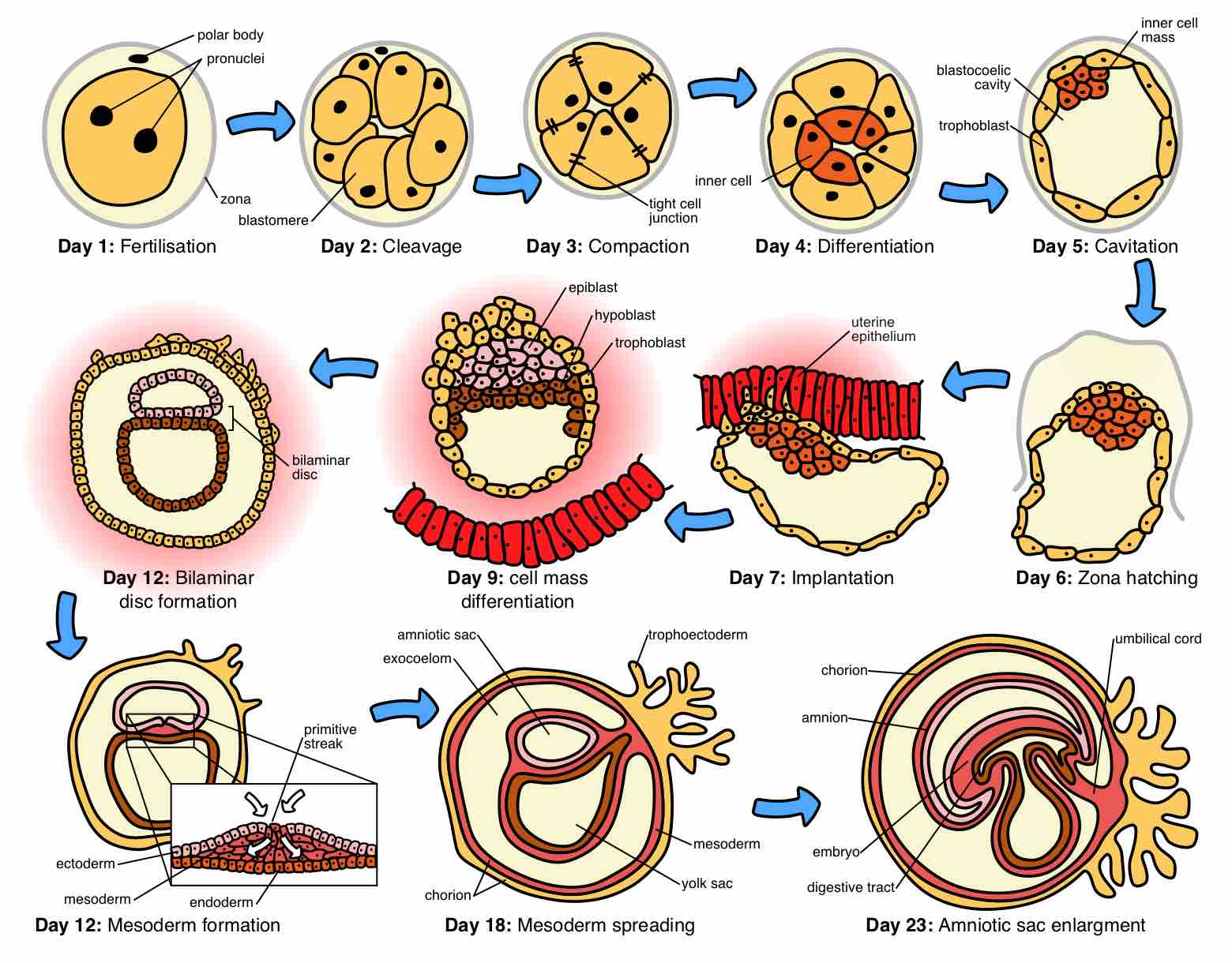The dimensions of human development are divided into separate but consecutive stages in human life. They are characterized by prenatal development, toddler, early childhood, late childhood, adolescence, early adulthood, middle adulthood, and old age.
Prenatal development is the process during which a human embryo gestates during pregnancy, from fertilization until birth. The terms prenatal development, fetal development, and embryology are often used interchangeably. The embryonic period in humans begins at fertilization and from birth until the first year, the child is referred to as an infant. The majority of a newborn infant's time is spent in sleep. At first, this sleep is evenly spread throughout the day and night but after a couple of months, infants generally become diurnal.

Human Embryogenesis
The first few weeks of embryogenesis in humans begin with the fertilizing of the egg and end with the closing of the neural tube.
Babies between ages of 1 and 2 are called "toddlers. " In this stage, intelligence is demonstrated through the use of symbols, language use matures, and memory and imagination are developed. In the phase of early childhood, children attend preschool, broaden their social horizons and become more engaged with those around them. In late childhood, intelligence is demonstrated through logical and systematic manipulation of symbols related to concrete objects. Children go through the transition from the world at home to that of school and peers. If children can discover pleasure in intellectual stimulation, being productive, seeking success, they will develop a sense of competence.
Adolescence is the period of life between the onset of puberty and the full commitment to an adult social role. In early adulthood, the person must learn how to form intimate relationships, both in friendship and love. The development of this skill relies on the resolution of other stages. It may be hard to establish intimacy if one has not developed trust or a sense of identity. If this skill is not learned, the alternative is alienation, isolation, a fear of commitment, and the inability to depend on others
Middle adulthood generally refers to the period between ages 40 to 60. During this period, middle-aged adults experience a conflict between generativity and stagnation. They may either feel a sense of contributing to the next generation and their community or a sense of purposelessness. The last and final stage is old age, which refers to those over 60–80 years. During old age, people frequently experience a conflict between integrity and despair.